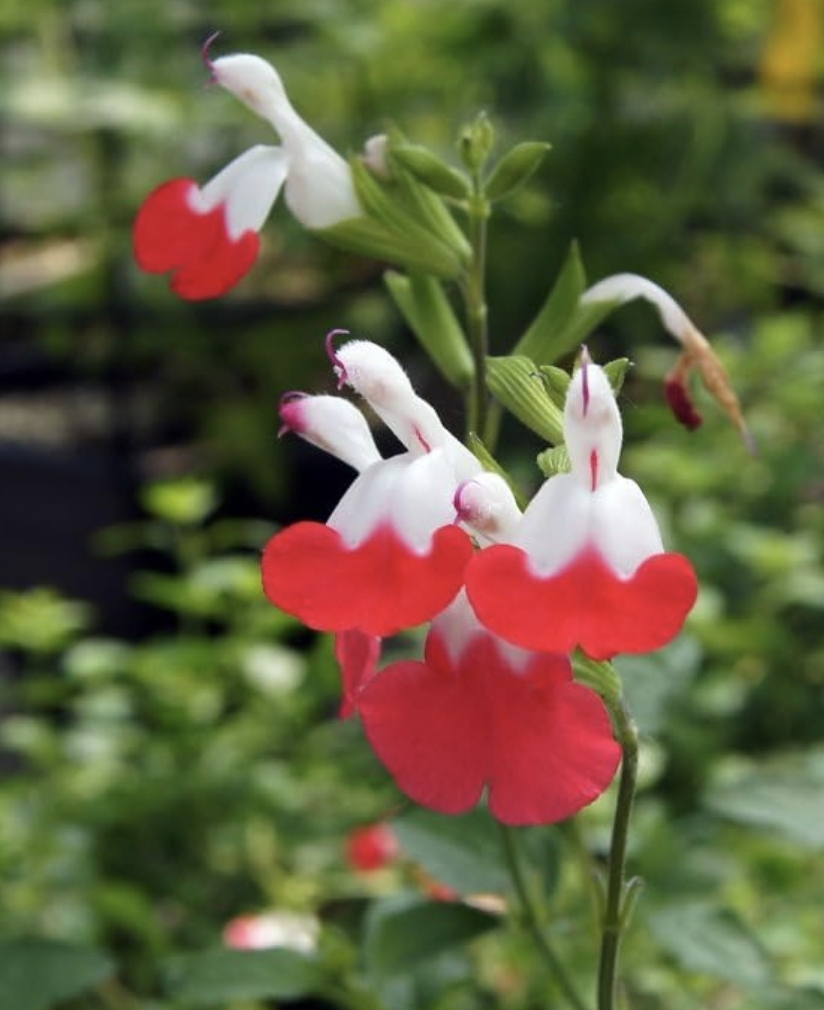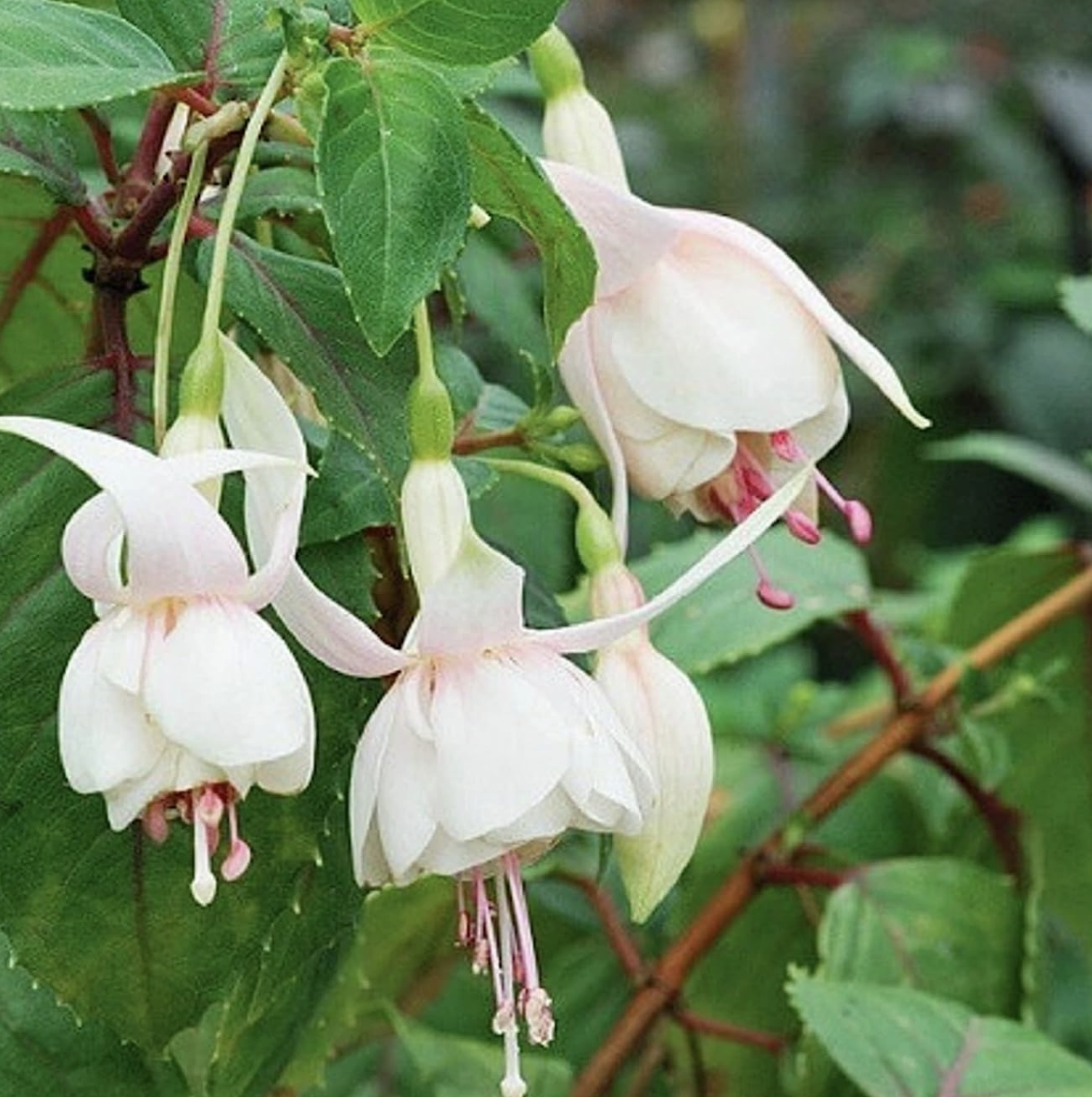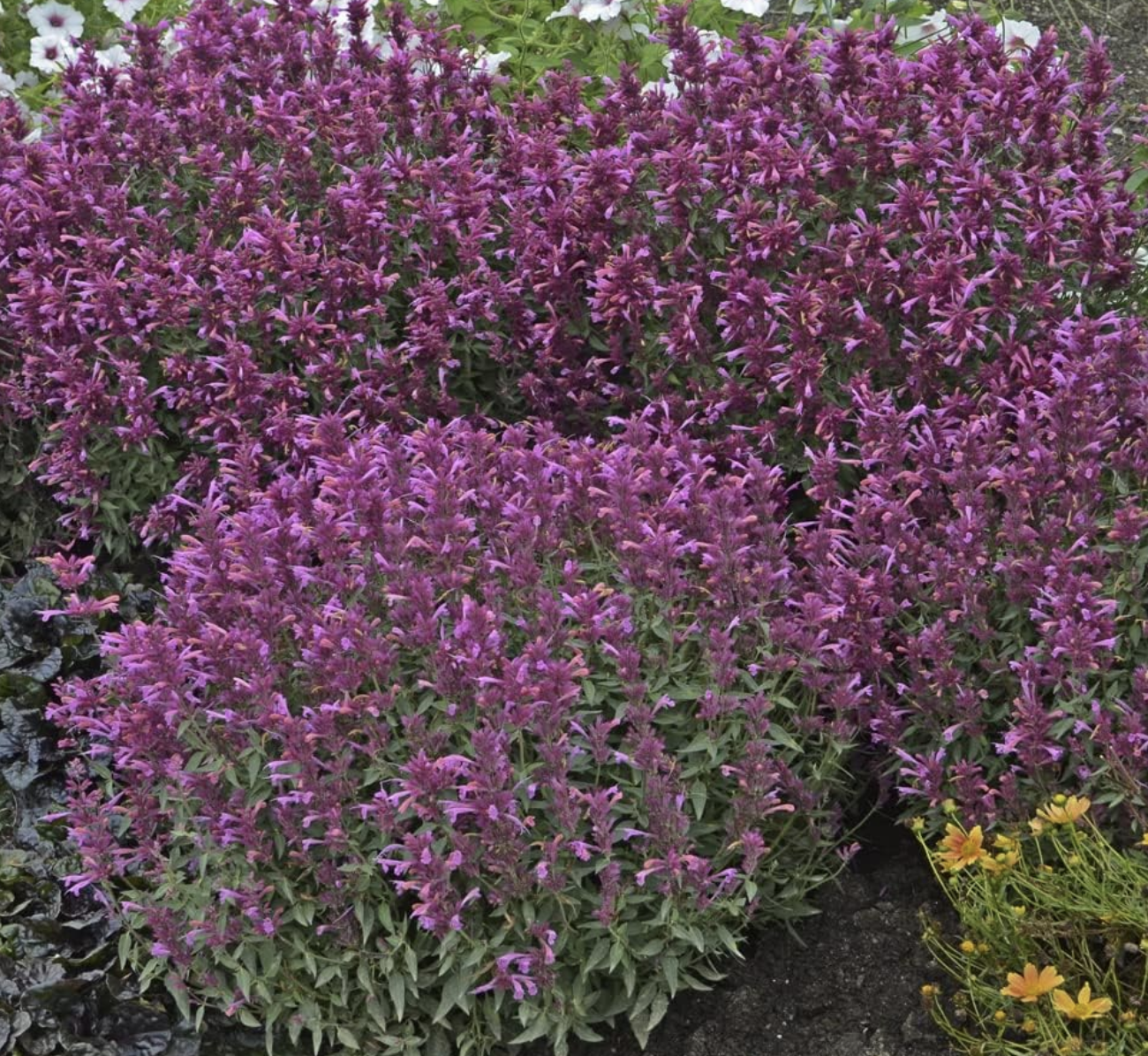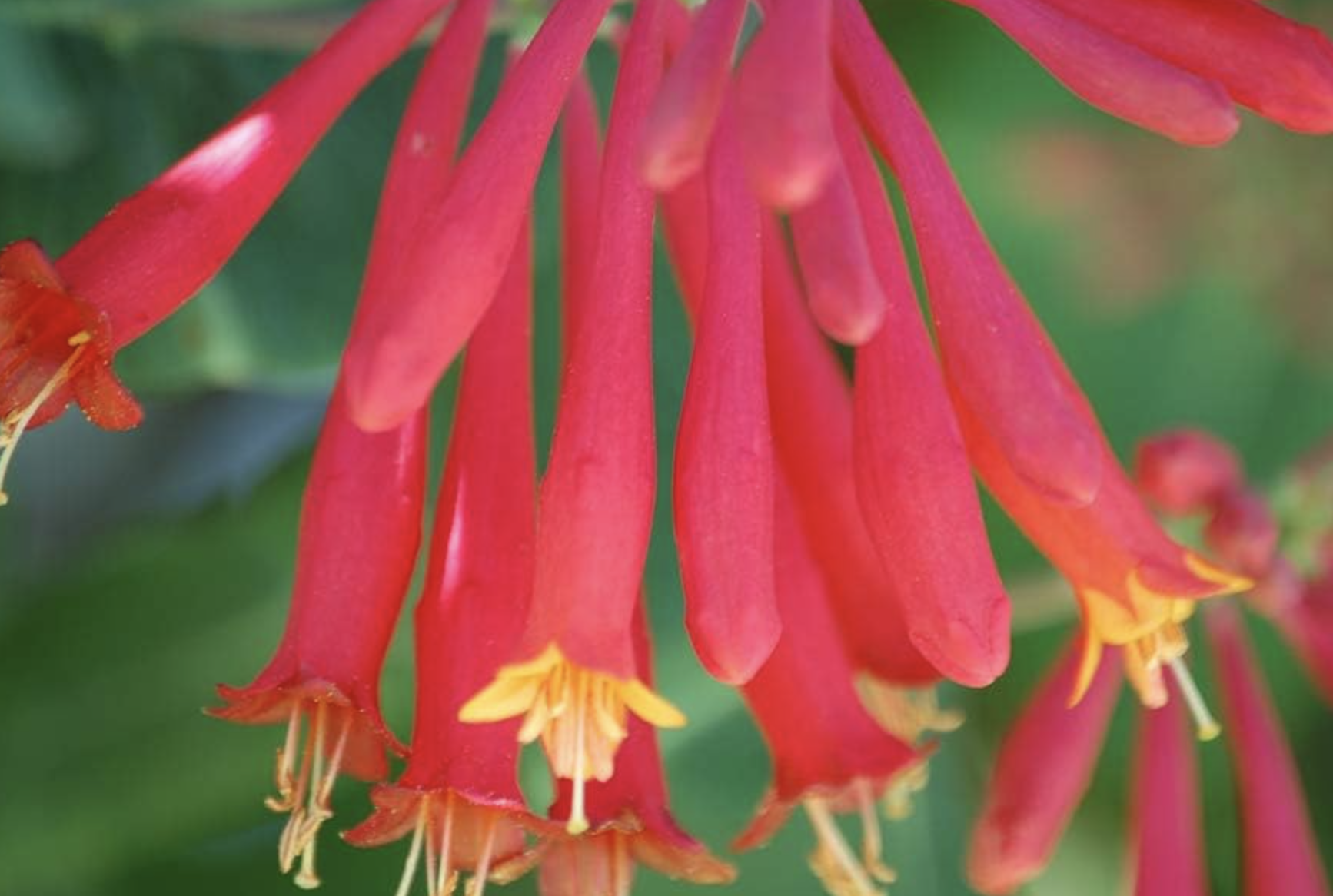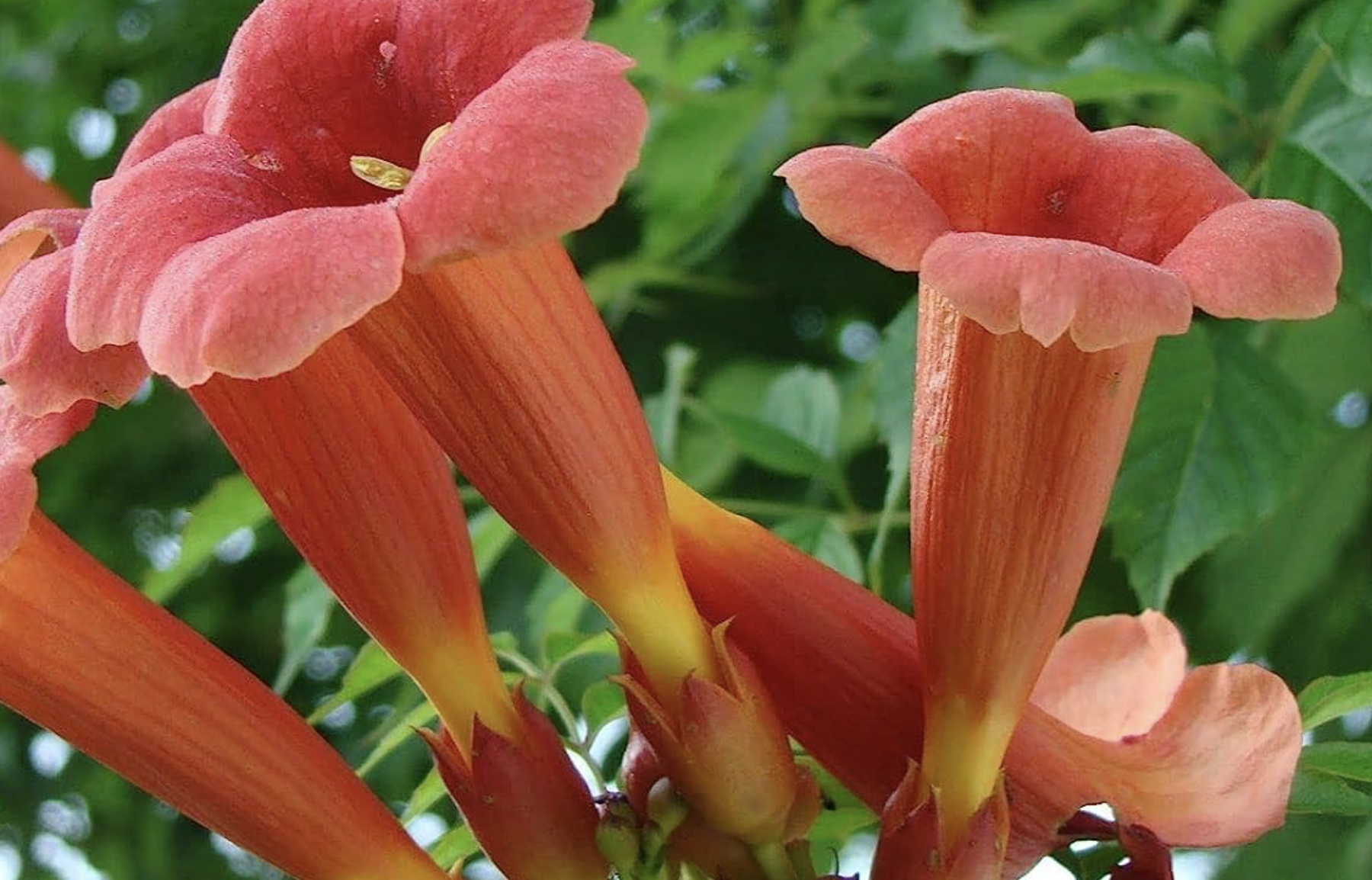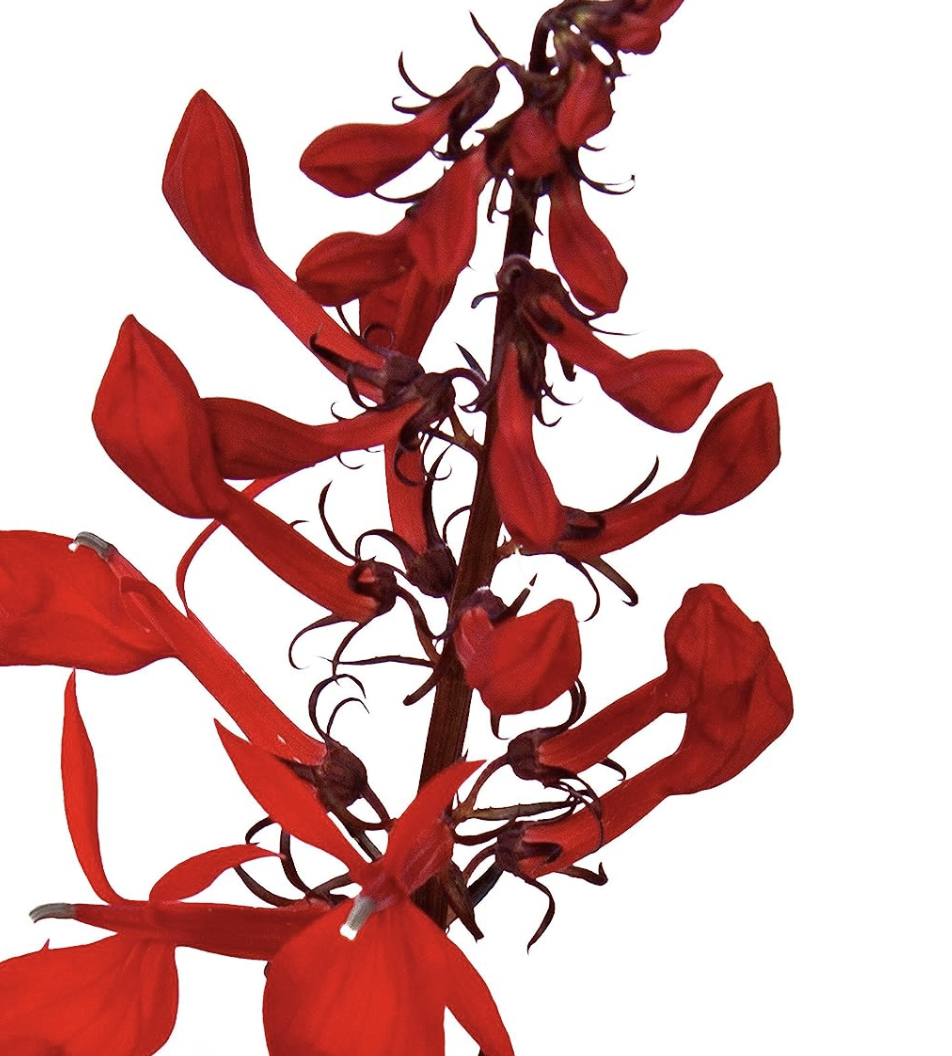The 10 best flowers for hummingbirds - beautiful blooms to tempt these enchanting birds to your backyard
Everyone needs hummingbirds in their lives. Here are the flowers that will tempt them to your balcony, roof garden or yard
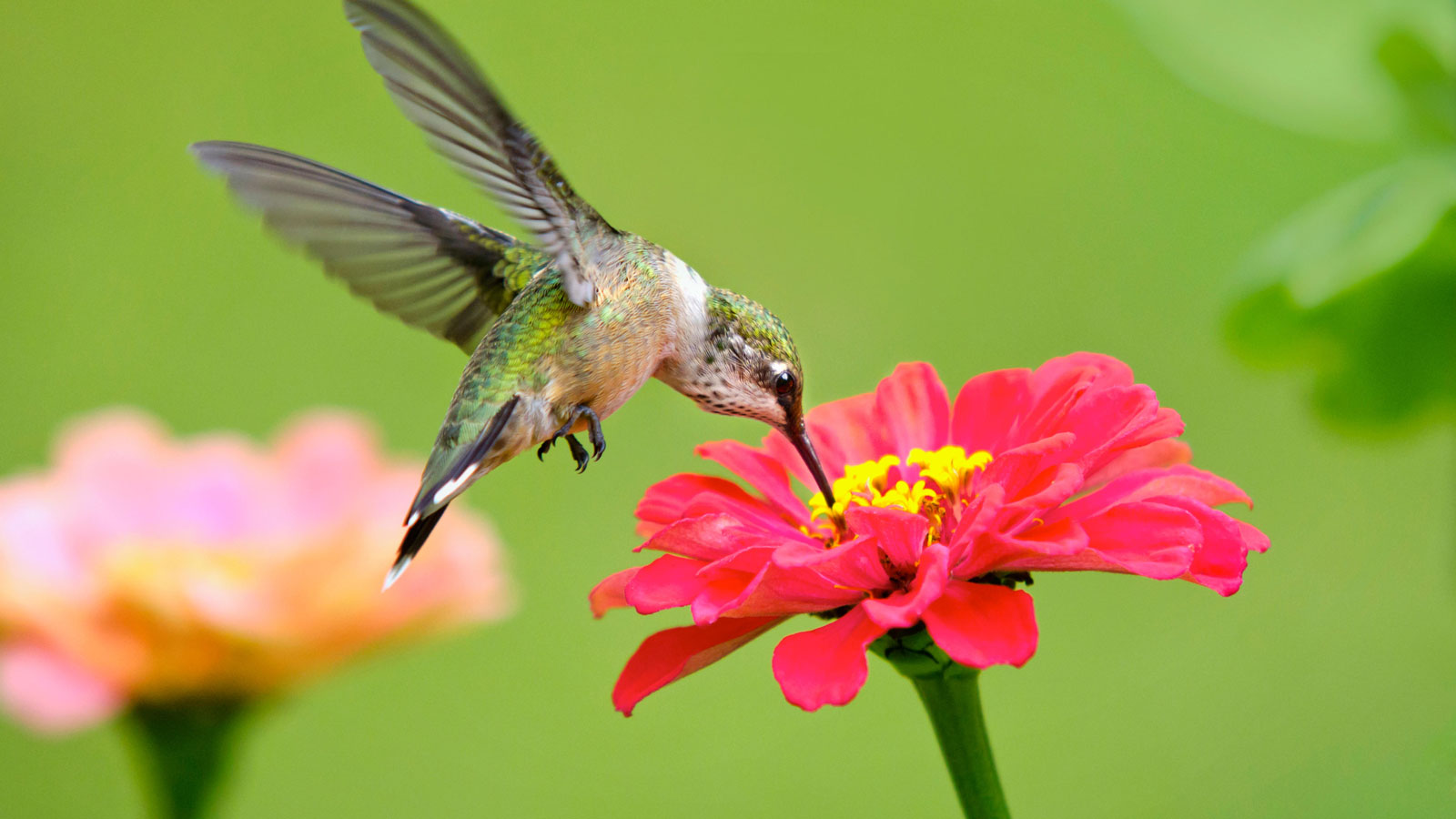
Every outdoor space is better if you can count hummingbirds among your wildlife visitors. Not only are they beautiful to look at but they help the ecosystem too. One of the major pollinating birds in North America, they will flit from flower to flower with their hovering wings, spreading pollen as they go.
How do you attract more of these beauties into your garden? It's easy. All you have to do is plant plenty of nectar-rich flowers in the bright colors that hummers love. In addition, make sure they bloom at different times all summer and into fall to keep the nectar feast going as long as possible for our little friends.
As part of your hummingbird garden ideas, be sure to include some tubular-shaped flowers in the mix too as hummingbirds tend to gravitate towards them. Native and local plants are always good, and it's always important to avoid insecticides and pesticides. Add a place for hummers to perch and a supply of fresh water for them to drink, and your job is done.
The 10 best flowers for hummingbirds
Experts explain which blooms will bring hummingbirds to your backyard.
1. Salvia
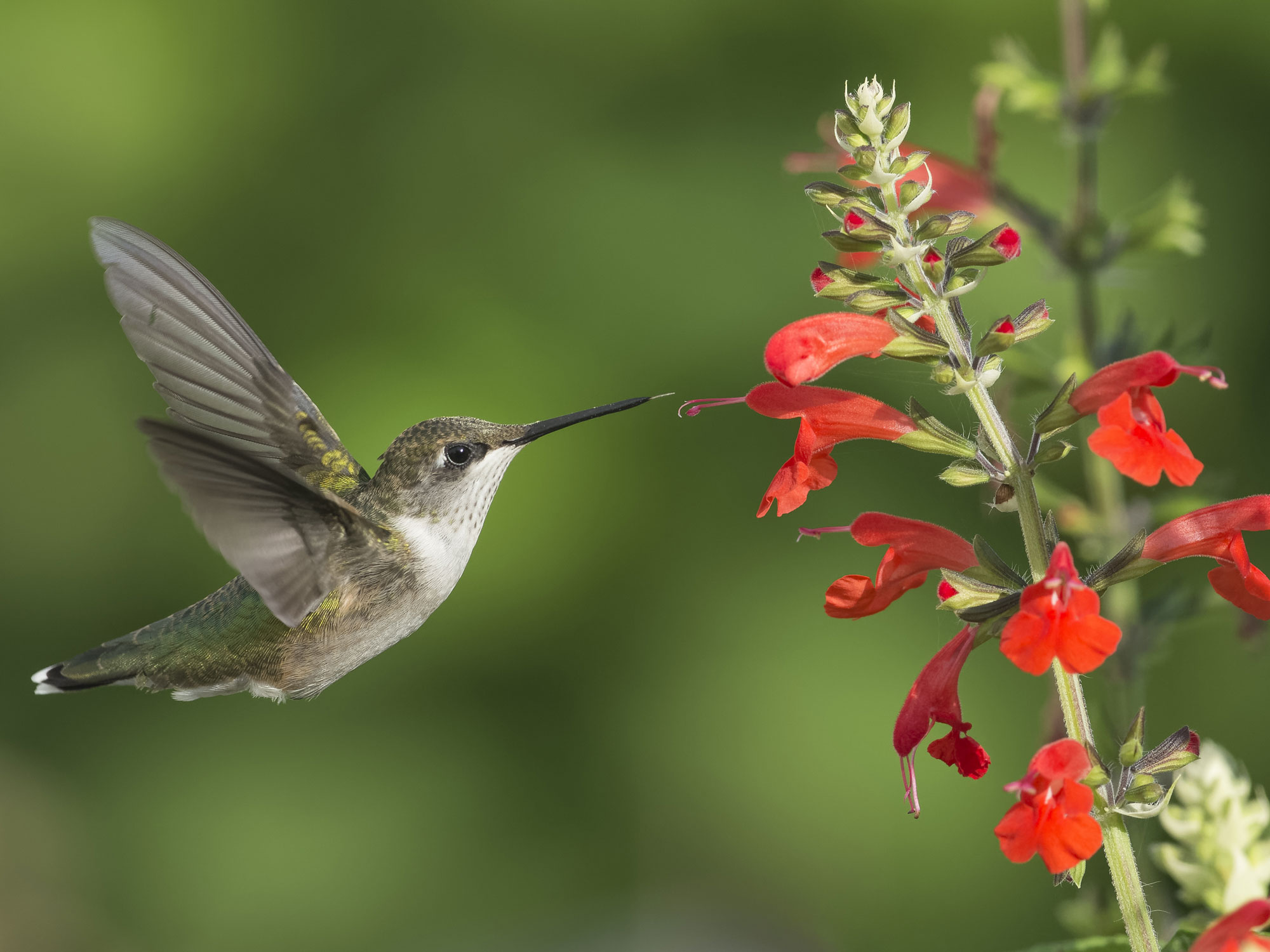
With their long tubular flowers, brightly-colored salvia are a No 1 choice for attracting hummingbirds. With a variety of annuals and perennials native to North America to choose from, there's a perfect salvia for any landscape garden, container, or hanging basket.
'In warm climates, salvias are a standout, as well as a food station for the last of the migrating hummingbirds, if you are lucky enough to have them visit your gardens,' says Jenny Rose Carey, horticulturalist and author of The Ultimate Flower Gardener's Guide, available here at Amazon.
One particular variety to look out for is the new Salvia 'Hummingbird Falls. 'This trailing salvia is the first of its kind, offering gardeners an extremely heat-tolerant plant with vivid-blue blooms and rich, shiny black calyces that show off all summer and are loved by hummingbirds and other pollinators,' says Gail Pabst, a horticulturalist who works for the National Garden Bureau.
The Livingetc newsletters are your inside source for what’s shaping interiors now - and what’s next. Discover trend forecasts, smart style ideas, and curated shopping inspiration that brings design to life. Subscribe today and stay ahead of the curve.
Alternatively how about a variety that comes in vibrant shades of red and white. 'My favorite for guaranteed hummingbirds is Salvia microphylla 'Hot Lips',' says Amy Hovis, principal of Eden Garden Design and owner of Barton Springs Nursery, based in Austin, Texas. 'It has a flower that literally looks like red lips, and their color is almost fluorescent. The tubular shape of the flowers allows hummingbirds easy access to the nectar with their long beaks and tongues. Every time I plant 'Hot Lips', I am guaranteed hummingbirds will flock to the garden.'
2. Cuphea
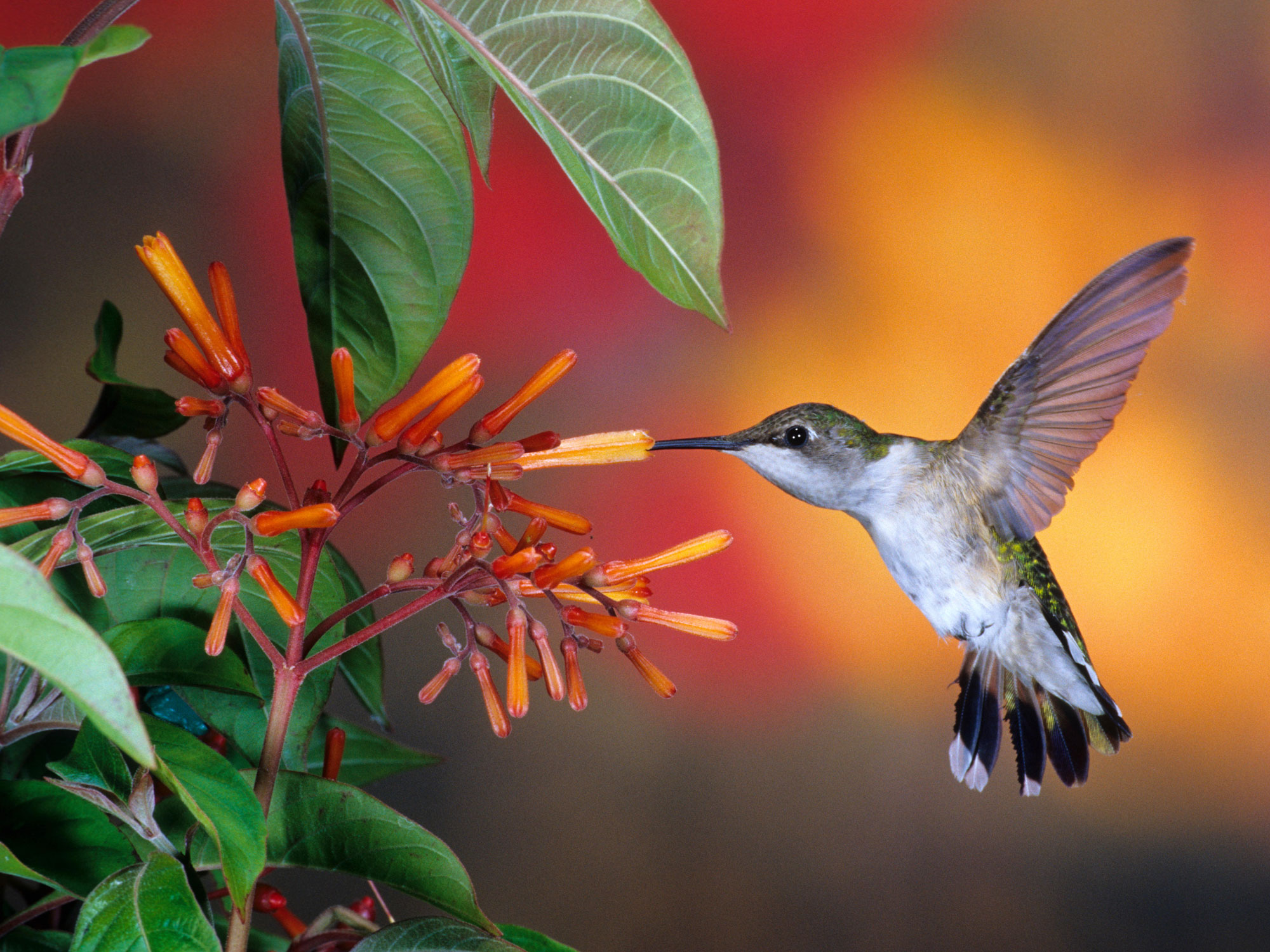
Cuphea is a highly decorative heat tolerant, low maintenance garden plant. The flowers are small but plentiful, and the good news is you don't need to deadhead them. A native of Mexico, Guatemala and Honduras, it has naturalized to Hawaii, where some even consider it a weed. It is a perennial in zones 9 and higher but is generally grown as an annual.
They make a great filler plant for mixed containers and borders, where they grow up to around 3 feet tall. Their vivid color and sweet nectar make them absolutely irresistible to hummingbirds.
'Hummingbirds love the flowers of this shrubby plant for the long cigar-like shape [some varieties of cuphea are known as cigar plants] and tropical hues including orange, red, and pink,' says plant expert Janet Loughrey of Garden Design. 'Grown primarily as an annual, cuphea blooms from planting until first frost, providing a continuous source of nectar for hummingbirds and other pollinators.'
3. Mandevilla
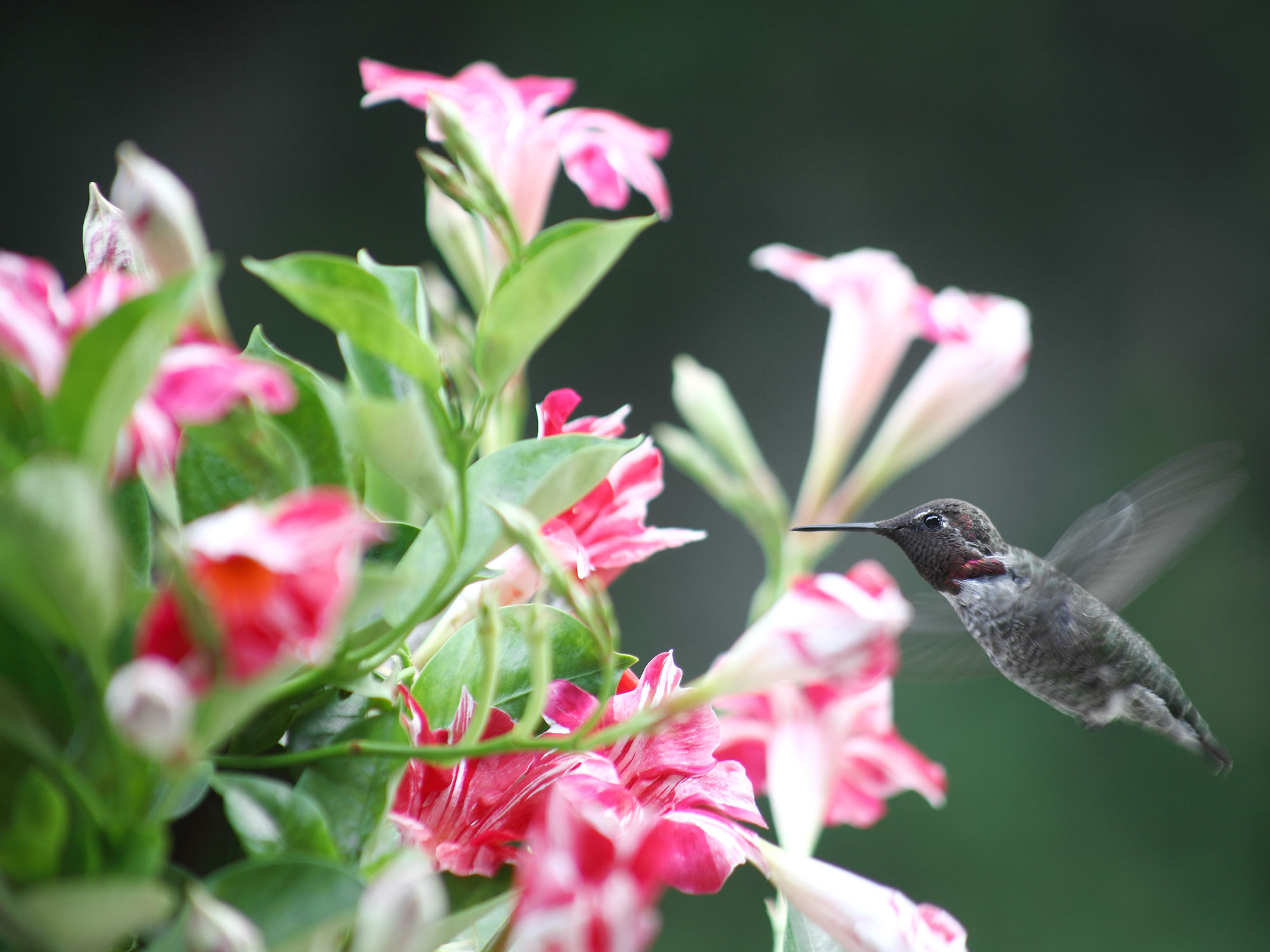
The mandevilla plant's brightly colored, trumpet-shaped flowers are a favorite among hummingbirds and other pollinators - easily one of the best flowers for bees, too. 'This tropical vine-style plant flourishes in containers and hanging baskets, making it an ideal choice for those who love to watch hummingbirds up close,' says Gail Pabst. 'Sun Parasol' mandevilla are easy to grow, beautiful and their brightly colored flowers will bring a touch of the tropics to your yard.'
These climbing perennials, also known as rocktrumpets, call the tropical woodlands of Central and South America home, and are native to the Southwestern United States. If you live in a mild climate they will bloom all year round, so they are a natural choice if you want to attract hummingbirds into your yard.
They're also prized for their ability to quickly screen arbors and trellises, where they will grow up to 10 feet tall, making them one of the best plants to cover a fence.
4. Fuchsia

This pretty plant is a favorite for container gardening, as well as being highly attractive to hummingbirds for the tubular shape of the inner petals (corollas), which are perfect for dipping their beaks into. Just plant up a patio pot with a fuchsia or two, and watch out for the hummingbirds to flock to them.
'Fuchsia flowers produce a lot of nectar with a high sugar content, which hummingbirds will seek out as a quick source of energy,' says Janet Loughrey. 'Flowers come in a wide range of single and bicolors, blooming for months from late spring until first frost.'
Choose a hardy variety such as Fuchsia magellanica, also known as the hummingbird fuchsia, with graceful arching stems of deep red flowers.
5. Agastache 'Golden Jubilee'
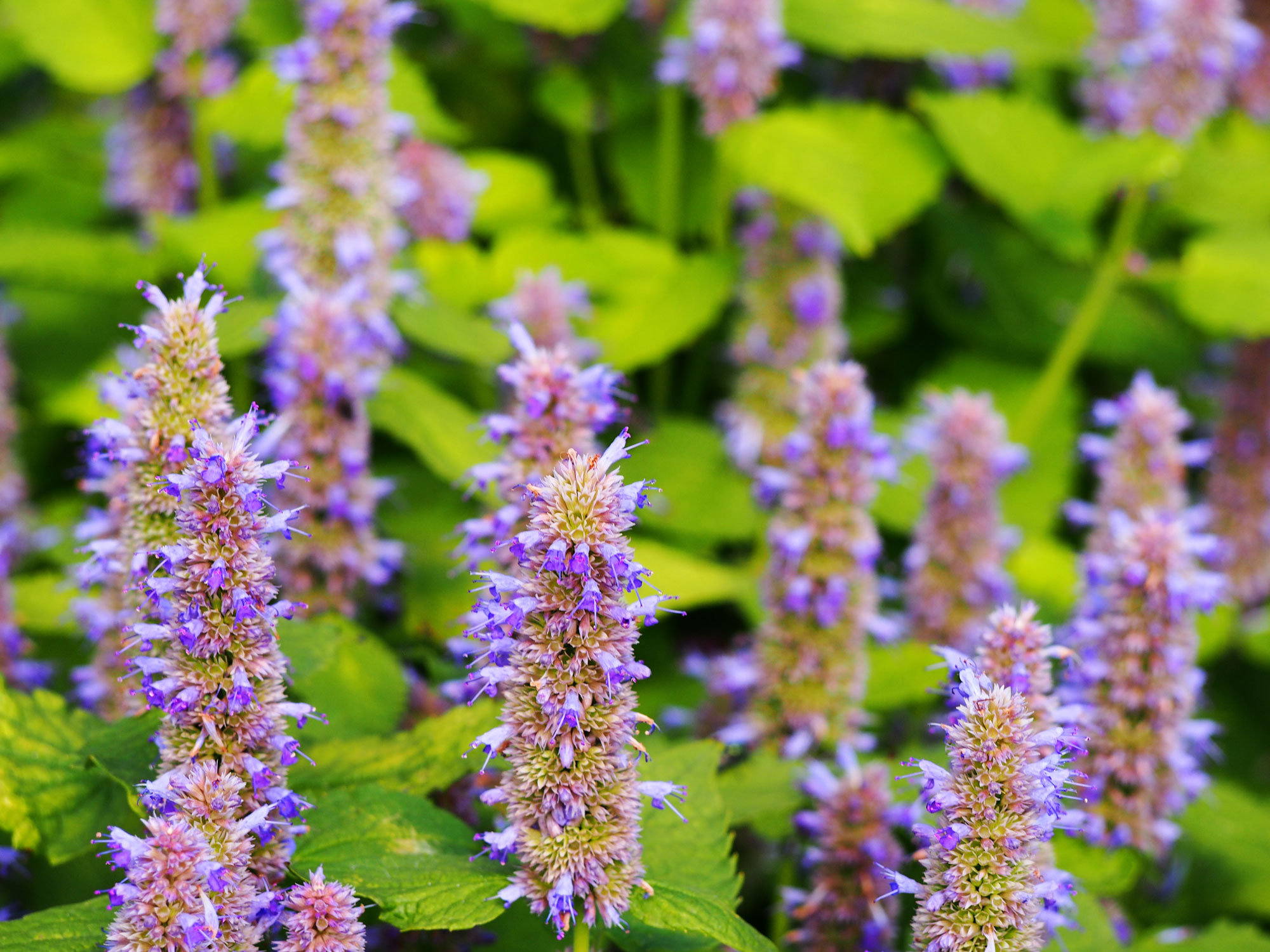
Long blooming agastache with their spiky flowers and scented foliage are one of the hero plants of the wildlife garden. They are mainly native to North America.
Agastache 'Golden Jubilee' is an excellent plant for attracting wildlife such as hummingbirds. 'The Agastache 'Golden Jubilee' plant boasts golden foliage that is eye-catching and showy. It is topped with clusters of blue flowers that are loved by hummingbirds and other pollinators,' says Gail Pabst. 'Their long flowering season, striking flower spikes, and licorice-scented foliage make them a low-maintenance and deer-resistant option for any backyard.'
There is also a group of agastache known as 'hummingbird mints' ,with cultivars like hot pink 'Rosie Posie'. They come in a range of sunset shades which are a great choice for the late summer garden.
6. Turk's Cap (Malvaviscus arboreus)

This spreading shrub has bright-red, pendulous, hibiscus-like flowers from spring through fall. Especially useful in shady situations, this is a good choice to grow in part sun or partial shade flower beds if you want a tropical color pop. It can reach a height of 10 feet.
'This is one of my favorite plants for shade or to plant en masse under a big oak tree,' says Amy Hovis. 'This native perennial produces red tubular flowers that are irresistible to hummingbirds. It blooms from spring through fall ,and is both cold hardy and drought tolerant.'
Ruby-throated hummingbirds and black-chinned hummingbirds love to forage in these flowers, which are native to Texas.
7. Penstemon (Beardtongue)
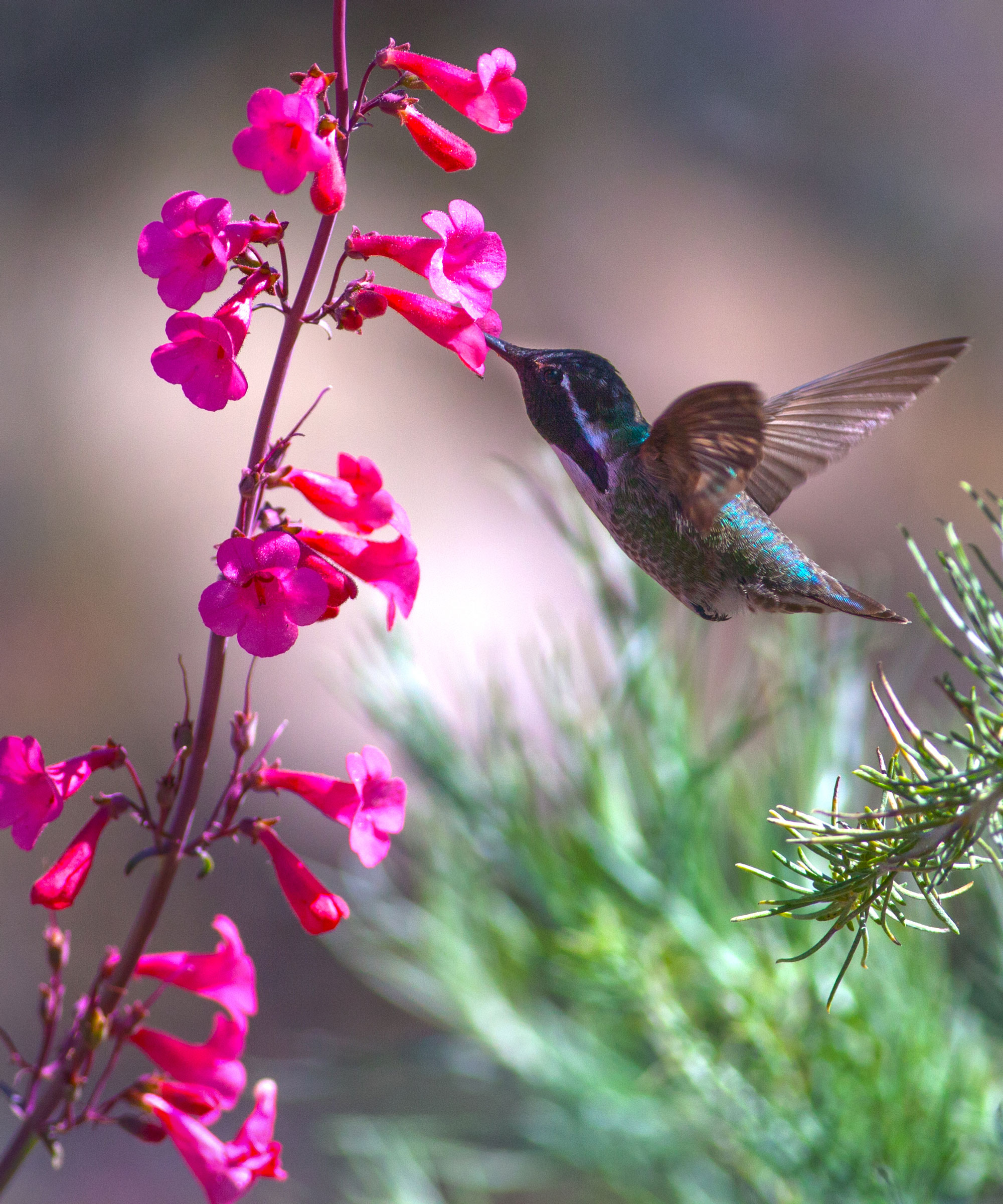
Penstemon is a great drought-tolerant choice if you want to attract hummingbirds to your yard or dry garden. It blooms from mid summer through fall, and its upright, vibrant red, pink and purple flower panicles provide easy access to nectar for hummingbirds.
Native to North America, it can thrive in a variety of local climates, and with over 100 varieties to choose from there will be one to suit your yard. 'Ruby' is a standout, deep pink cultivar that quickly bushes up and blooms into winter in milder regions, while the showy clusters of flame red firecracker (Penstemon eatonii) are a magnet for hummingbirds.
Penstemons are particularly sought-after by the tiny, desert Costa's hummingbirds that live in the Sonoran and Mojave deserts of Arizona and California.
8. Trumpet honeysuckle

Native Lonicera sempervirens, sometimes called 'trumpet honeysuckle', is loved by ruby-throated hummingbirds, which breed east of the Mississippi River. The bright orange-red, trumpet-shaped flowers appear in clusters amongst the blue-green leaves, which bloom right through winter in the southern states.
They are a magnet for hummers, who love the abundance of sweet nectar on offer. When the hummingbird probes for nectar, its head gets dusted in pollen. As the hummer journeys on through the garden visiting other flowers, it pollinates them as it goes.
Honeysuckle grows quickly, as tall as 20 feet in some locations, so be sure to factor this into your plans and make sure you have things under control.
9. Trumpet flower vine (hummingbird vine)
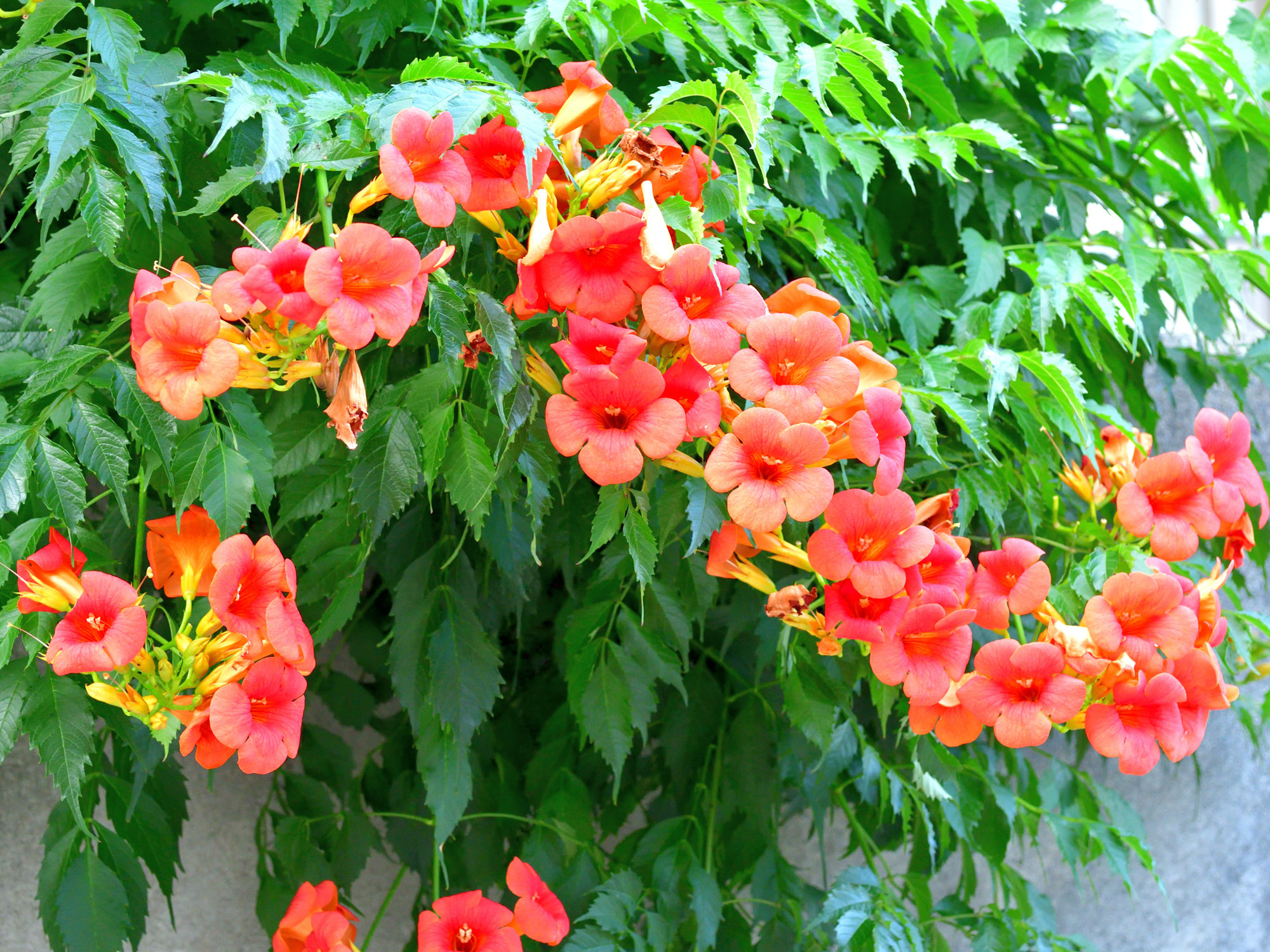
Hummingbirds cannot resist the vivid coral-colored blooms of the gorgeously showy trumpet vine. A year round resident of the North Pacific coast, Anna’s hummingbird species is a fan of this easy to grow vine that is native in many areas of the US. As it's also known as hummingbird vine, it's no surprise that these birds love this flower.
Position your trumpet vine in a sunny spot and this will result in the most flowers. Give it an arbor, trellis, or fence to scramble over, but keep it under control as it's another variety than can spread rapidly and become invasive. Trim it regularly, and be on the lookout for runners to pull out in order to halt its progress other than where you want it.
10. Cardinal flower (perennial lobelia)
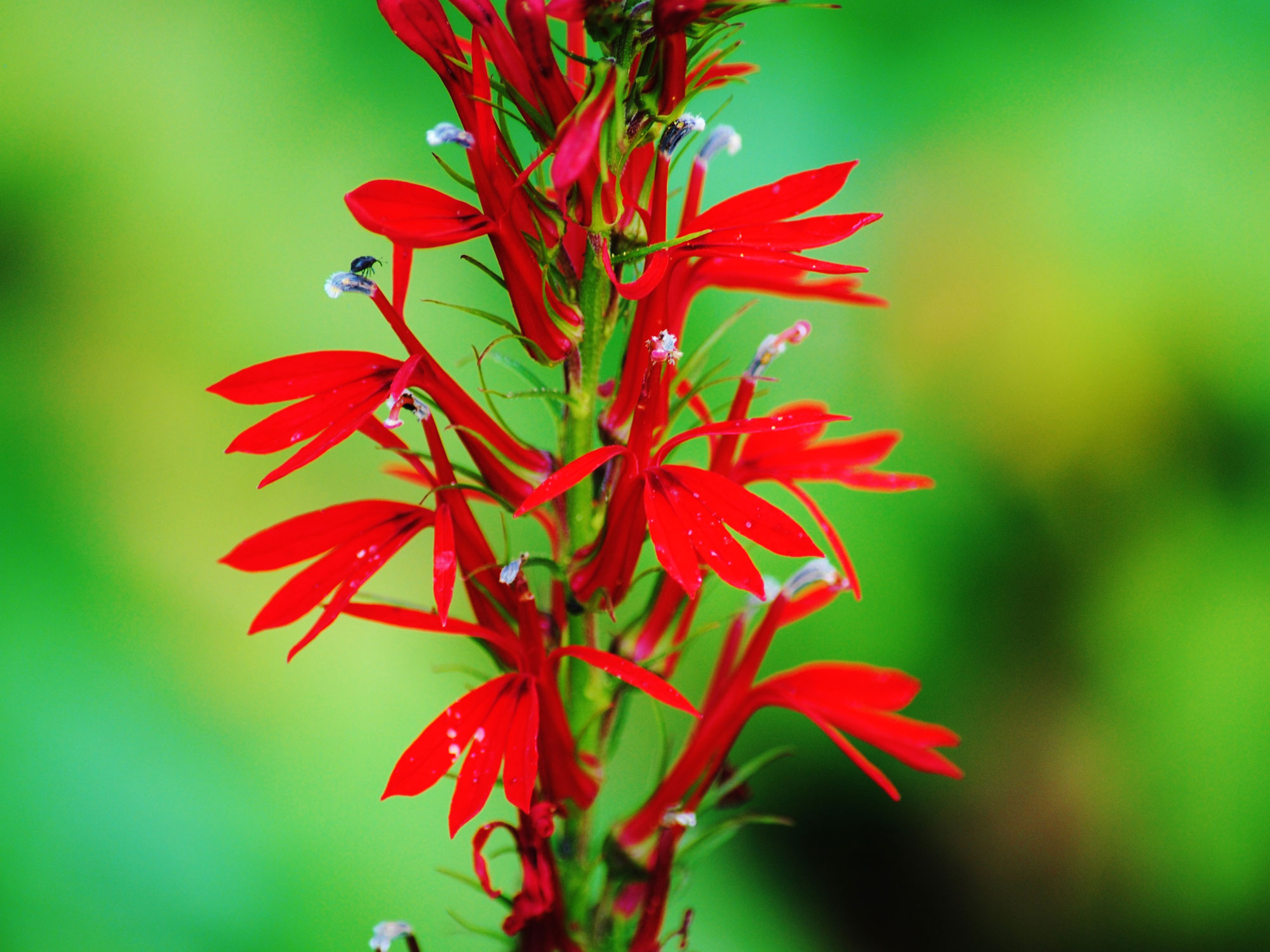
Our tenth choice is an absolute beauty. The lobelia cardinalis variety has spikes of pure red flowers that are loved by hummingbirds, and is not to be confused with the trailing variety that is popular for container gardens and hanging baskets.
'Red flowers are widely found in warmer areas where they attract pollinating birds,' says Jenny Rose Cary. 'I am lucky enough to have hummingbirds visit my garden, where the vibrant red perennial lobelia known as cardinal flower thrives. There is nothing better than walking out there on a summer morning and hearing the buzz of vibrating hummingbird wings close to my ear as they zip from flower to flower.'
Another big fan of hummers is Shubber Ali, CEO of Garden for Wildlife. 'Cardinal flowers offer brightly colored tubular flowers that are attractive to hummingbirds,' she says. 'These plants also provide habitat and are an excellent food source to hummingbirds for three seasons of the year.' Shubber also recommends columbine and wild bergamot for the same reason.
What flower colors attract hummingbirds?
One of the main flower colors that attracts hummingbirds is red, but they often feed on flowers of other colors too. So it makes sense to choose flowers in a variety of colors for your garden. 'The flower colors that most attract hummingbirds are usually bright red, yellow or orange, as birds can see these colors,' explains Jenny Rose Carey.
'Hummingbirds see colors in the ultraviolet range and can perceive combinations of colors that we cannot. It sounds like a psychedelic world that would blow our minds, but it is one that helps hummingbirds perform their aerial acrobatics.'
Lifestyle journalist Sarah Wilson writes about garden design and landscaping trends. She has studied introductory garden and landscape design, and also has an RHS Level 2 qualification in the Principles of Plant Growth and Development. She is a regular contributor to Livingetc.com, and also writes for Homes & Gardens, Country Living, Country Homes & Interiors, and Modern Gardens magazines. Her first job was at Elle magazine, during which time a trip to the beautiful La Colombe d'Or in St-Paul-de-Vence led to an interest in writing about all things botanical. Later as lifestyle editor at Country Homes & Interiors magazine one of the highlights were the run of captivating country gardens that were featured.
